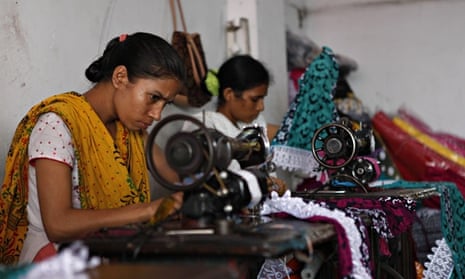In his blog last week, Alan Roberts, executive director international operations at the Accord on Fire and Building Safety, outlined the progress made by the Accord so far.
More than 175 primarily European brands and retailers joined the Accord, while 26 US and Canadian companies joined a second group, the Alliance for Bangladesh Worker Safety. Both initiatives are bringing companies together in an unprecedented collaboration to address common challenges of worker safety in the Bangladesh garment sector following the Rana Plaza factory collapse in Bangladesh last year.
The Accord has invested considerable resources into inspecting factories that are the principal suppliers to its members. The Alliance has undertaken a parallel exercise and the two initiatives have now completed inspections of nearly 1,700 factories.
The breadth, scope, and speed of these inspections represent a significant accomplishment. In the absence of effective government oversight, brands and retailers are taking greater responsibility for fire and building safety. Roberts highlights that the Accord’s inspections have identified more than 80,000 safety hazards. In 33 factories, safety issues are so serious that the Accord and the Alliance have recommended that production be suspended because of the risk to workers. This is a sobering reflection of the state of factory safety in Bangladesh.
Inspections are an important first step in making factories and workers safe, but they are not enough. Eighteen months after Rana Plaza, there are two major unanswered questions pertaining to factory safety in Bangladesh: 1) how big is the total universe of factories and facilities producing for the export market, and 2) how will factories actually be fixed?
There is no authoritative figure for the number of factories producing for the export market. Between them, the Accord and the Alliance have acknowledged responsibility for about 1,800 factories. But a study (pdf) published earlier this year by the NYU Stern Center for Business and Human Rights estimated that the total number is closer to 5,000 - 6,000 factories and facilities.
The study also highlighted the essential role of indirect sourcing – subcontracting with limited control, visibility, or oversight – in meeting demand for high volumes of low cost garments. Indirect sourcing is not necessarily a bad practice, but keeping it in the shadows is and makes hundreds of thousands of workers less safe in Bangladesh.
While the Accord and the Alliance both have textual commitments to inspect subcontracting facilities, there is little evidence that this is happening in practice. Factories that fall outside these two initiatives are the responsibility of the government, which lacks the capacity to inspect – much less fix – unsafe factories.
The second unanswered question is how to fund factory upgrades or relocation. Accord and Alliance inspections have identified thousands of deficiencies in the factories that fall within their inspection programs. But to date, none of the major brands or retailers has made a public commitment to fund the upgrades and repairs that are needed.
Yes, both initiatives are identifying necessary repairs through publicly available corrective actions plans and have agreed to provide some funding for workers who are displaced by repairs (when factories close as a result of safety deficiencies, workers rightfully demand compensation).
But who will pay for repairs remains unclear. The Alliance estimates an average cost of $250,000 per factory. That’s more than $400m for Accord and Alliance factories alone. No company member of the Accord or the Alliance has made a public commitment to pay these costs.
In addition, the International Finance Corporation (IFC) has approved a $10m Global Trade Supplier Finance programme to help factory owners pay for repairs. But the IFC demands loan guarantees by western brands and retailers, which only a single company, VF Corp, has yet agreed to meet.
The accomplishments Roberts highlights in conducting inspections and identifying factory safety hazards are important. But workers and factory owners need to know next steps. Brands and retailers should work with Bangladeshi manufacturers, the government of Bangladesh, foreign governments, and development organisations to advance a comprehensive approach – underwritten by significant funding – to upgrade the entire export garment sector.
This will require an objective assessment of the scope of the problem, especially by identifying all factories and facilities producing for the export market. Such an assessment will raise challenging policy questions, such as establishing minimum safety standards for all factories, not just those with direct relationships with foreign brands. Setting standards has been a contentious issue in Bangladesh in the last year, and this process will require much-needed local leadership.
A task force with both local and international experts needs to be created, both to analyse the scope of the problem and to propose ambitious, practical next steps. The Accord and the Alliance should be part of this process, but it should be led by local stakeholders. Real progress on labour rights in Bangladesh will require a bigger vision, a more collaborative approach, and significant, consolidated funding.
This article was amended on Tuesday 28 October to correct that VF Corp is the only company to sign up to the International Finance Corporation’s programme. It previously stated no company had signed up to the agreement.
Sarah Labowitz is the co-director of the NYU Stern Center for Business and Human Rights and a fellow of the Truman National Security Project.
Read more stories like this:
- The Bangladesh Accord factory audits finds more than 80,000 safety hazards
- The Bangladesh Accord is a red herring
- Advertisement feature: Fairtrade: making a real difference to farmers in Palestine
The supply chain hub is sponsored by the Fairtrade Foundation. All content is editorially independent except for pieces labelled advertisement feature. Find out more here.
Join the community of sustainability professionals and experts. Become a GSB member to get more stories like this direct to your inbox
